Petzl GriGri (2024 Review): Is this the Best Belay Device?
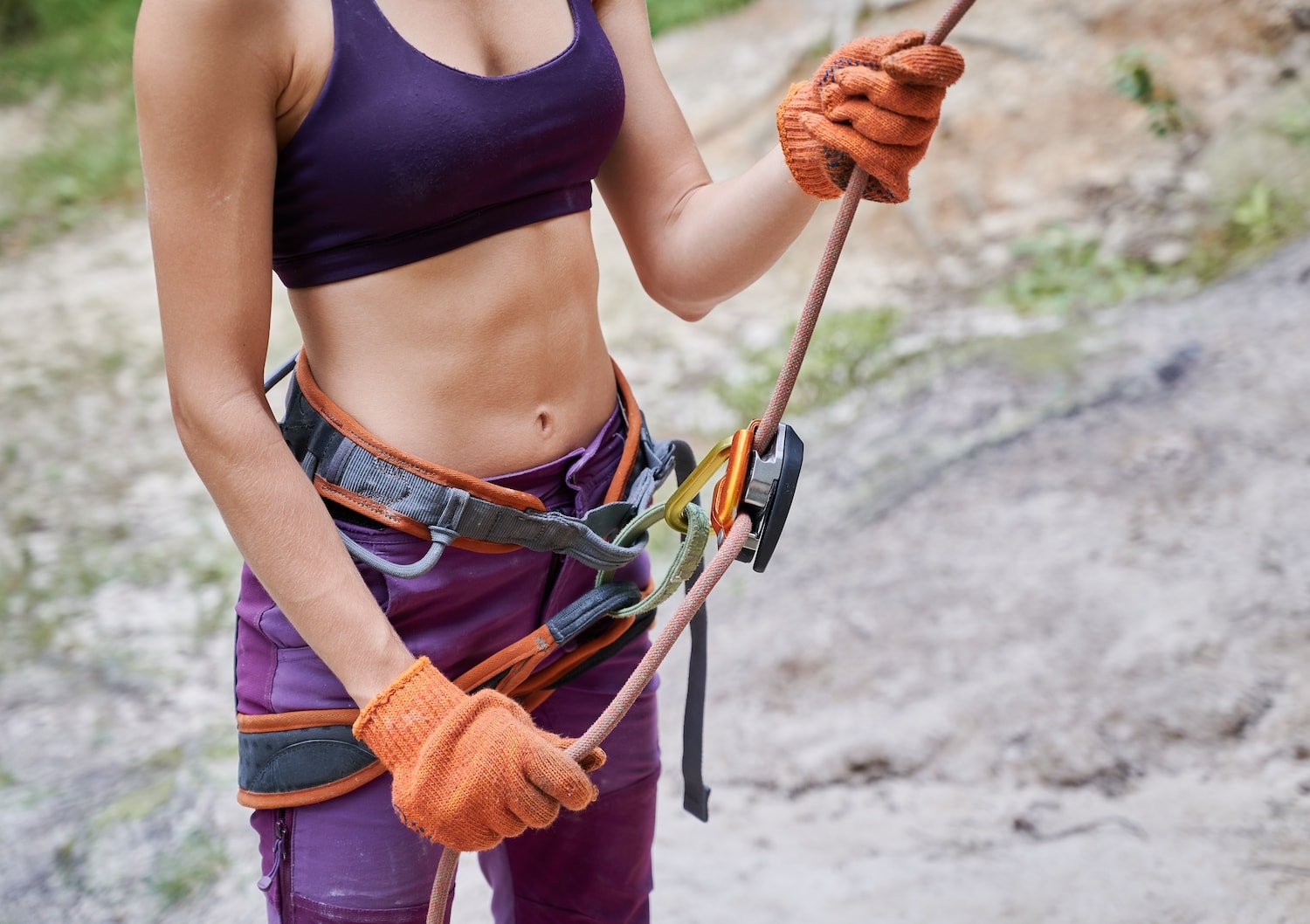
A lot has changed since the days of wool clothing, leather boots, hip belays, and hemp ropes (1). Most notably, climbing objectives are getting bigger, and climbers are getting stronger.
Advancements in the sport of climbing have become possible not solely because climbers have gotten bolder. Climbing has also been pushed forward because climbing technology has drastically become more specialized (although boldness is certainly a characteristic of any cutting-edge climber).
In particular, improvements in dynamic ropes and belay devices have allowed climbers to try harder and climb farther. One of the major advancements in climbing belay tech is the Petzl Grigri.
This article with take a deep dive into the history of the Petzl Grigri belay device and talk about some of its most popular best uses in modern rock climbing.
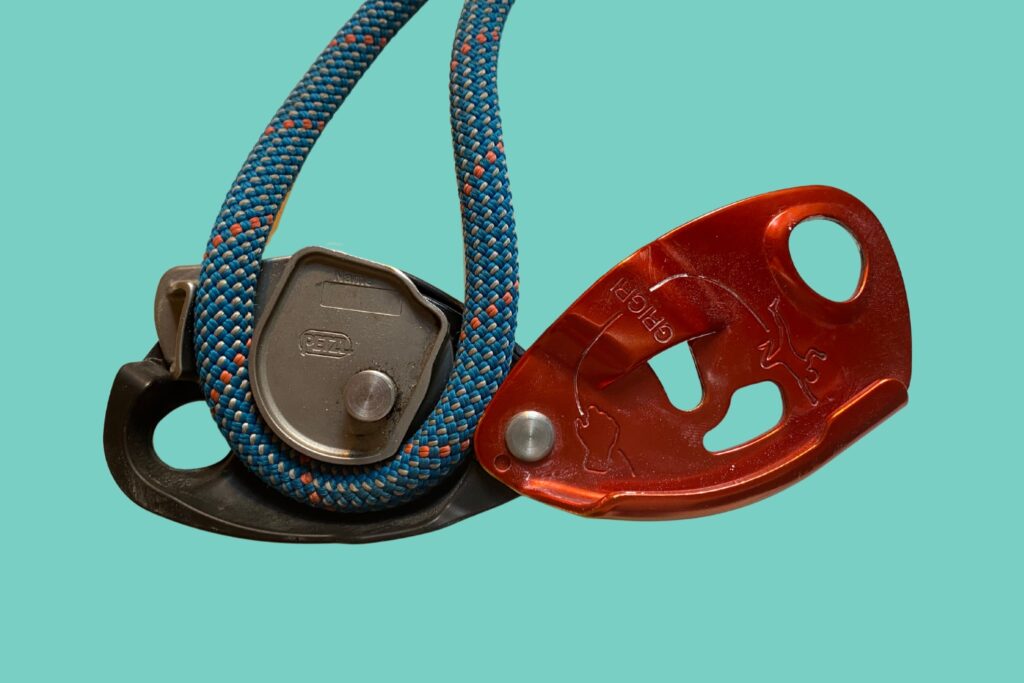
An Overview of the Petzl Grigri
The Grigri is an assisted braking belay device designed for climbing inside or outdoors. Since the inception of the original Grigri 1, the Grigri has continued to set the standard for belay devices with cam-assisted blocking (braking).
The Grigri makes belaying easier and safer thanks to the cam-assisted braking mechanism. The ergonomic handle allows you to control the descent of the climber smoothly. And the whole device is lightweight, durable, and fits within the palm of your hand.
The Origin Story of the Grigri
The Grigri came about out of a need to design a belay device that could allow for the simultaneous supervision of multiple beginner climbers and reduce the risk of belaying accidents. For Petzl, the goal was to create something as trustworthy as the seatbelt (2).
Over time, Petzl engineers combined the features of other climbing devices to create the first Grigri. In particular, two devices caught their attention: the Petzl STOP (3), a self-braking descender, and the SOLO, a device invented for self-belaying while climbing alone.
Little by little, they fine-tuned the design. They added a handled camming mechanism, diagrams to guide the user, and a pivoting plate to capture the rope once it was threaded in place. Eventually, they had the first generation of Grigris ready for shipment in 1991.
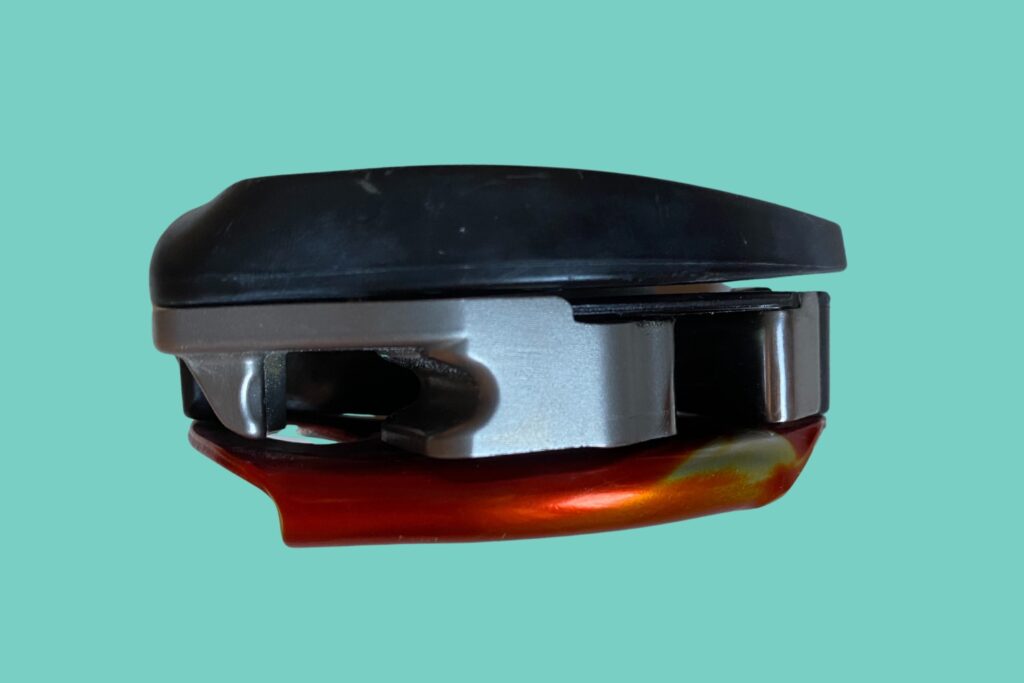
Design and Components
The Grigri features a relatively simple yet optimally balanced design. The exterior of the device features two side plates with attachment holes. The fixed side plate (left) features a handle for descending. The moving side plate (right) features pictograms and allows access to the device’s interior.
On the inside of the Grigri, is a camming mechanism for catching falls. Under load, the assisted-braking mechanism pinches the rope. In addition, newer generation Grigris also have a friction plate that helps you give a more comfortable belay.
- Swinging slide plate: one side of the Grigri slides open to allow you access to the inside channel of the device where you load the climbing rope.
- Cam and cam axle: a stainless steel cam mechanism pinches the climbing rope, making it an assisted braking device.
- Friction plate: an additional stainless steel plate adds friction, giving you more control.
- Reinforced nylon handle: an ergonomic handle allows you to open or “defeat” the cam-assisted blocking for feeding slack and lowering your climber with exceptional descent control.
- Fixed side plate: the other side of the Grigri is fixed and does not open, operating as the foundation for the nylon brake handle.
- Attachment Point: attachment holes accommodate a wide variety of locking carabiners and allow you to fix the Grigri to the belay loop on your harness when lead belaying or the masterpoint of your anchor when belaying from above.
- Pictograms: convenient pictures on both the interior and exterior of the Grigri provide guidance on how properly load the climbing rope into the device.

Grigri Specs
- Weight: 175 grams
- Rope compatibility: 8.5 to 11 mm single ropes (but most optimized with a single rope from 8.9 to 10.5 mm)
- Materials: aluminum side plates, stainless steel cam and friction plate, and reinforced nylon handle
- Certifications: CE En 15151-1, UKCA, UIAA
- Available colors: gray, red/orange, blue
- Price: check deals

Evolution of the Grigri Over the Years
The first generation Petzl Grigri belay device became available for purchase in 1991. At the time, it was the first belay device with a camming assisted-braking mechanism.
Ten years later, in 2011, the second-generation Grigri hit the shelves. The Grigri 2 improved on the older design, featuring a more compact and lightweight, optimally balanced design.
Shortly after, in 2017, the Petzl Grigri belay device evolved again. The Grigri+ features the same iconic assisted braking function but with an added selector knob that allows users to choose between two belay odes, top rope, or lead.
The evolution of the Grigri delay device has been possible because of Petzl’s cutting-edge design and manufacturing process.

Best Uses for the Grigri
Technically speaking, the Grigri is a belaying and descending device. Therefore, the best uses for the Grigri are belaying climbers and descending (via rappelling, also known as abseiling).
Belaying a Lead Climber
One of the best uses for a Grigri is belaying a leader climber. Grigris are great for belaying lead climbers because the device blocks and helps you arrest the fall when the climber falls.
After the device has cammed and braked the rope, the Grigri does all the “hard work” of holding the rope. In other words, how hard you grip the brake side of the rope doesn’t entirely matter. However, that does not mean you get let go.
This allows the belayer to relax a little and improves their belay experience. Especially if the leader is projecting a challenging climb at their limit and falls a lot.
And, of course, the assisted brake function provides extra security if the belayer loses control of the brake side while belaying or during a violent fall, for example, in a factor II fall on multi-pitch terrain.
Belaying Top-Rope Climbers
Grigris are also great tools for belaying top-rope climbers, especially if the climber needs to “hang dog” the route and is sitting on the rope a lot.
For top rope belaying, the Grigri+ is the ideal choice. That’s because it has a top-rope mode you can activate that makes taking in slack easier and belaying more comfortable. And it has an anti-panic handle that engages and locks if the belayer pulls too hard.
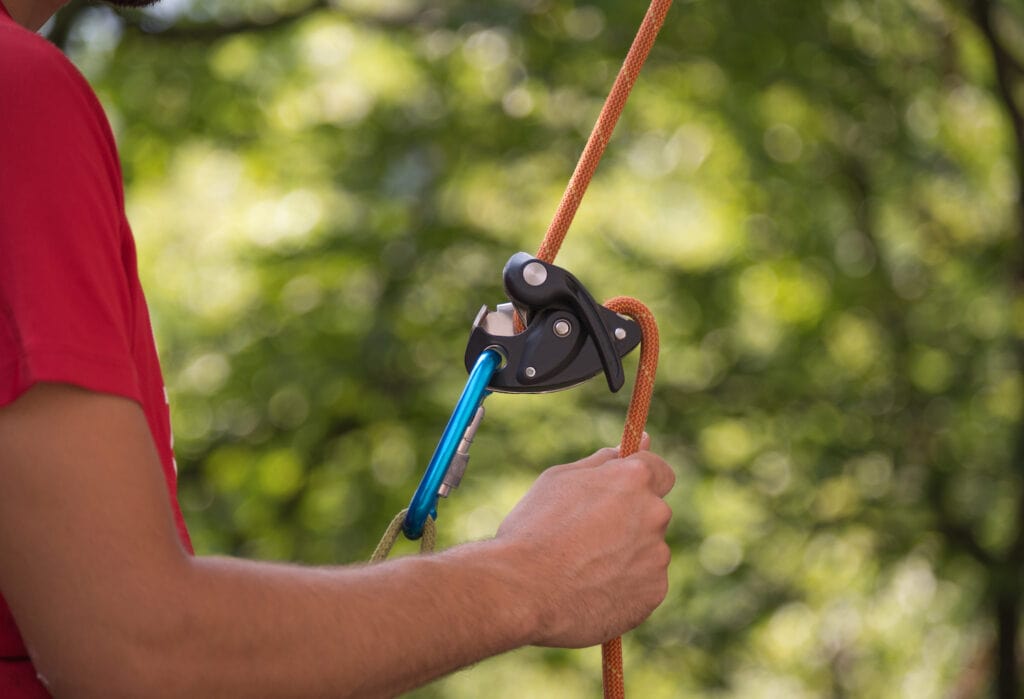
Belaying a Climber from Above
A Grigri can also be used to belay a climber from above. When properly loaded and oriented, you can use the Grigri to belay a second directly off the anchor.
This is especially helpful in multi-pitch settings where you are climbing with a single partner and single rope or belaying two seconds one at a time with two ropes in “caterpillar mode.”
Belaying with a Grigri from the above is particularly advantageous if you plan to lower the climber after they reach the top. Lowering with a Grigri from the top is significantly less convoluted than lowering with a tube-style device in guide mode.
That’s because the handled camming mechanism can easily unblock the rope. Then, the progressive control of the device (and a redirected brake strand) provide the belayer with easy control and the climber with a comfortable descent.
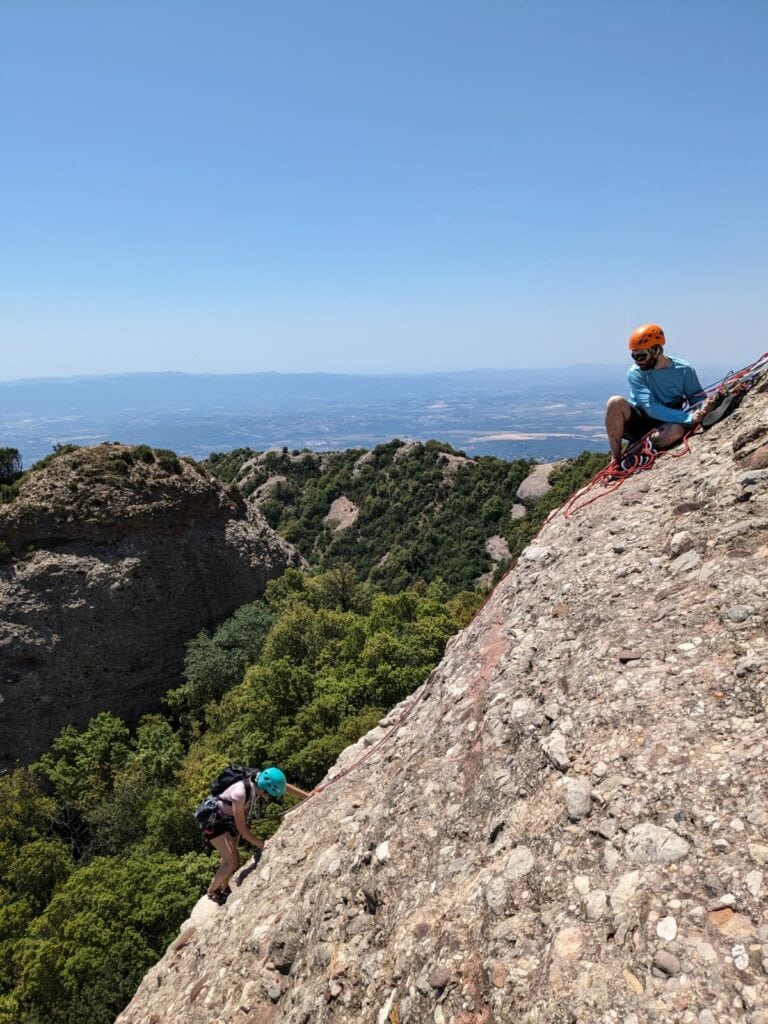
Rappelling on a Single Strand
The Petzl Grigri is also a descending device. In other words, you can rappel with a Grigri on a single strand so long as the rope is fixed.
The Grigri is excellent for descending on a single strand because the ergonomic handle easily controls the camming mechanism, providing a smooth and comfortable descent.
While descending on a single strand with a Grigri, always keep a hand on the brake strand of the rope.
Final Thoughts
Back then, the Grigri was the first belay device with a mechanically assisted braking function. However, nowadays, the Grigri is one of many assisted braking devices on the market.
Do I use a Grigri? Yes, it never leaves my harness while I’m guiding, and it comes with me on almost every recreational climb I go on with friends. It’s my preferred assisted braking belay device.
But is it the best? Only you can be the judge of that.
To find out, I recommend experimenting with the Grigri and other devices like it, like the Trango Vergo or Mad Rock Lifeguard.
Regardless of which device you develop a preference for, the important thing is that you learn to deploy an assisted braking device while belaying (and certain descending scenarios).
Devices with cam-assisted blocking or non-mechanical braking functions, such as the Mammut Smart 2.0, or Black Diamond Pilot, provide unparalleled security compared to an “old-school” tube-style device. Therefore, they deserve a spot on your harness.
Nonetheless, always double-check your knots and never let go of the brake strand.
How does the GriGri stack up against the king of tube-style devices, the Black Diamond ATC? Find out in our in-depth comparison.
References
Climbing Ropes – A Concise History of Materials & Construction
Devils Lake Climbing Guides
https://www.devilslakeclimbingguides.com/blog/history-of-climbing-ropes
The Grigri Belay Device: A Concept That Forever Changed Climbing
Petzl Official (July 2015)
https://www.petzl.com/US/en/Sport/News/2015-7-22/The-GRIGRI-belay-device–a-concept-that-forever-changed-climbing
Petzl STOP
Petzl Official
https://www.petzl.com/US/en/Sport/Belay-devices-and-descenders/STOP

